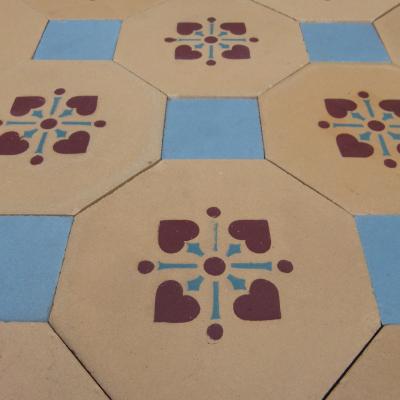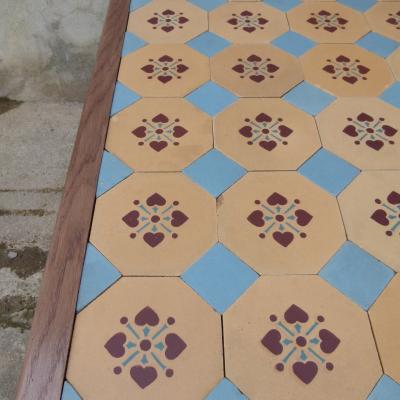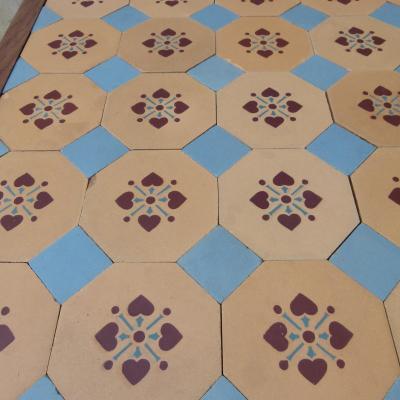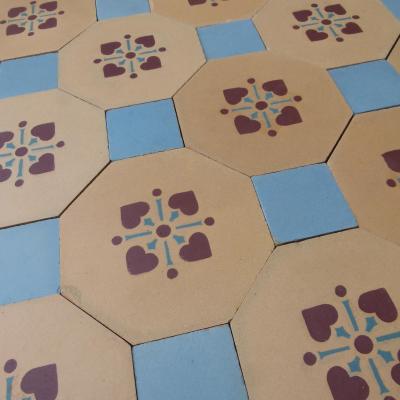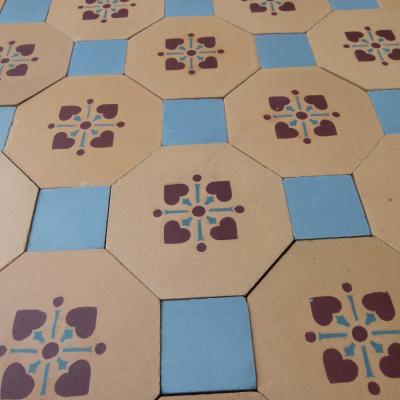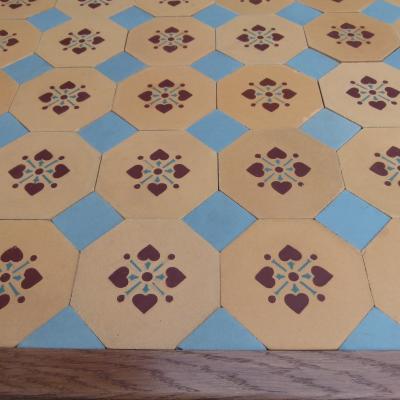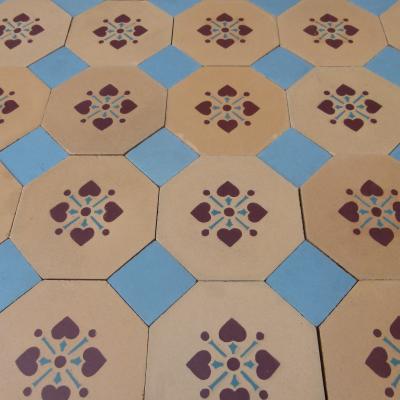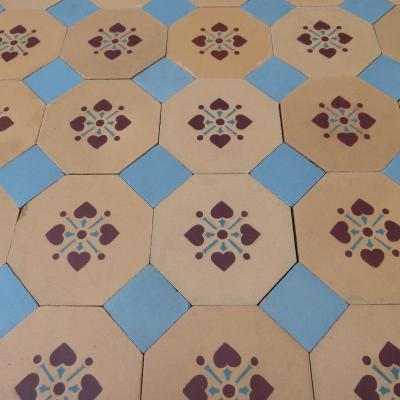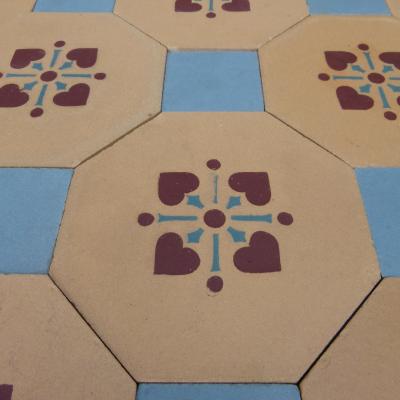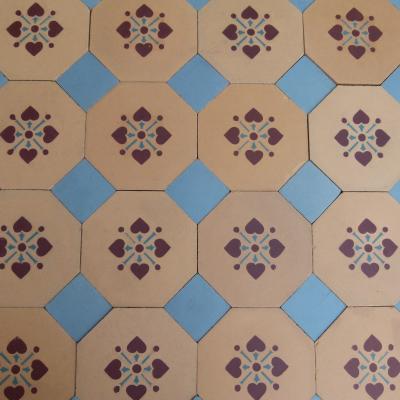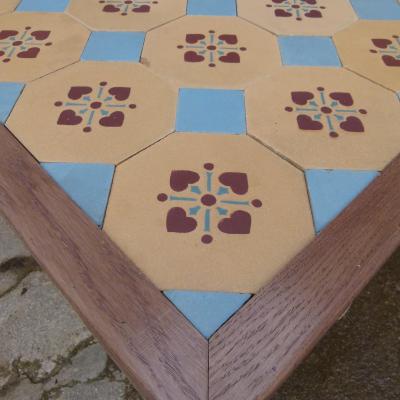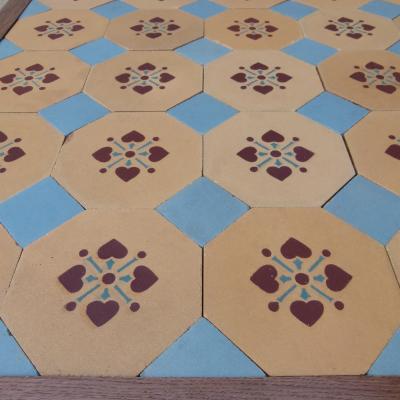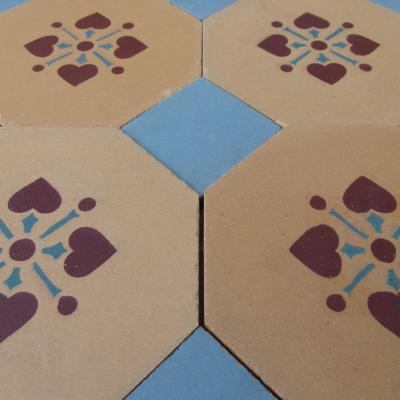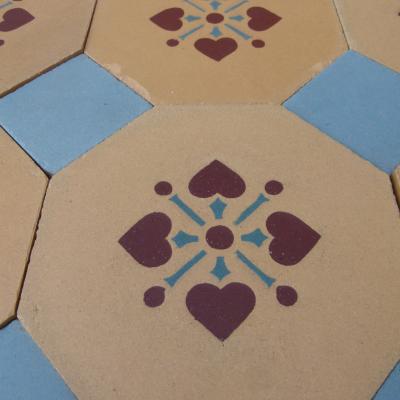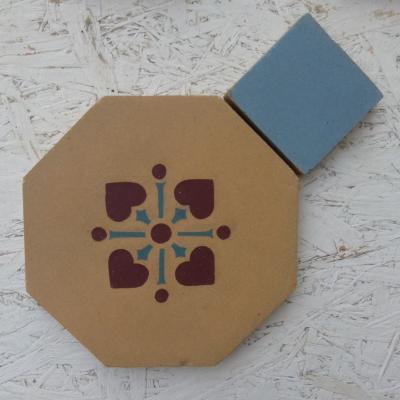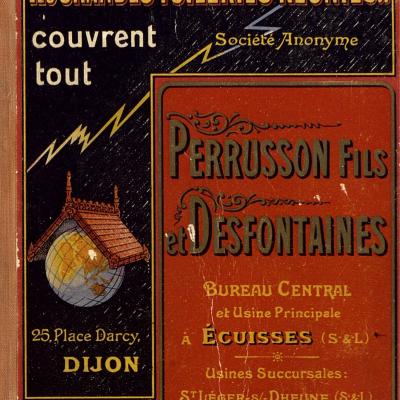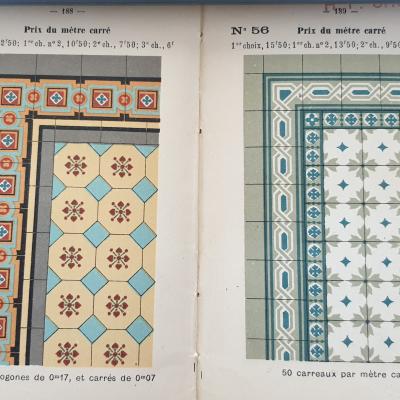A 7.25m2 Perrusson ceramic of octagons and cabochons 1910
This antique ceramic floor, manufactured by Perrusson Fils et Desfontaines, Ecuisses has been recovered from the reception room of a maison-maitre in Saint Jean-de-Losne, Burgundy, France. Totalling 7.25m2 / 78 sq ft it has been fully restored and arrives ready to relay and we include in the photo gallery scans from the Perrusson Fils et Desfontaines catalogue of 1910, showing the tiles.
The floor consists of a wheat coloured octagon ceramic tile, 17cm wide and high with 7cm sides, linked by a blue ceramic cabochon. The principal tile motif takes from the same blue as the cabochon, adding bordeaux in its heart themed design. In excellent condition, a small number of tiles bear edge nibbles or occasional small groutable chips as the photographs in the gallery of a randomly selected section of the floor show.
A beautiful French period ceramic that, in its purity and simplicity of design, endorses that often creatively 'less is more'.
There are 250 octagon tiles, plus free rejects for use as offcuts, 230 square cabochons and 55 triangle cabochons to be used for keying the octagons to the walls.
Perrusson - a brief history...
Jean-Marie Perrusson was not only known for ceramic tile production but also for the production of bricks and roof tiles. Many of the lozenge themed terracotta mechanical tiles in Burgundy bear the Perrusson hallmark. He built his first brick making factory in 1860 and started mechanical tile production in 1863, to which he added a workshop for manufacturing ceramic tiles in 1875. Further expansion of the ceramic tile production in the Saône-et-Loire was initiated (in Saint-Julien-sur-Dheune in 1866, St. Pantaleon 1870), and even beyond the department (in Sancoins Cher in 1870 and Fontafié in Charente in 1878).
The company was renamed ‘Perrusson son and Desfontaines’ in 1890 and the factory also manufactured architectural ceramics and statues. In April 1960 the factory finally closed its doors. The vast majority of the original buildings constructed in 1890/1900 are destroyed with the offices, changing rooms of the factory, the concierge and the electrical workshop the only significant remnants of the site that can still be seen.
The Perrusson factory employed 40 workers in 1860, 80 by 1874, 130 in 1890, 300 at its peak in 1900, 280 in 1930 and 130 during 1945 to 1950.
Owing to their beautiful ceramic creations the Perrusson family became wealthy and built a large villa close to their Production. The villa was decorated internally and externally with the many fine examples of their work, from roof tiles and chimney pots to faience, floor tiles and more. Sadly, with the passage of time, the villa became derelict and was eventually purchased and restored by the French state as it remains an outstanding architectural statement of some of the finest ceramic work of the period. It can be visited for a small entrance fee and a link can be found here to the Perrusson Villa website.
CE300



